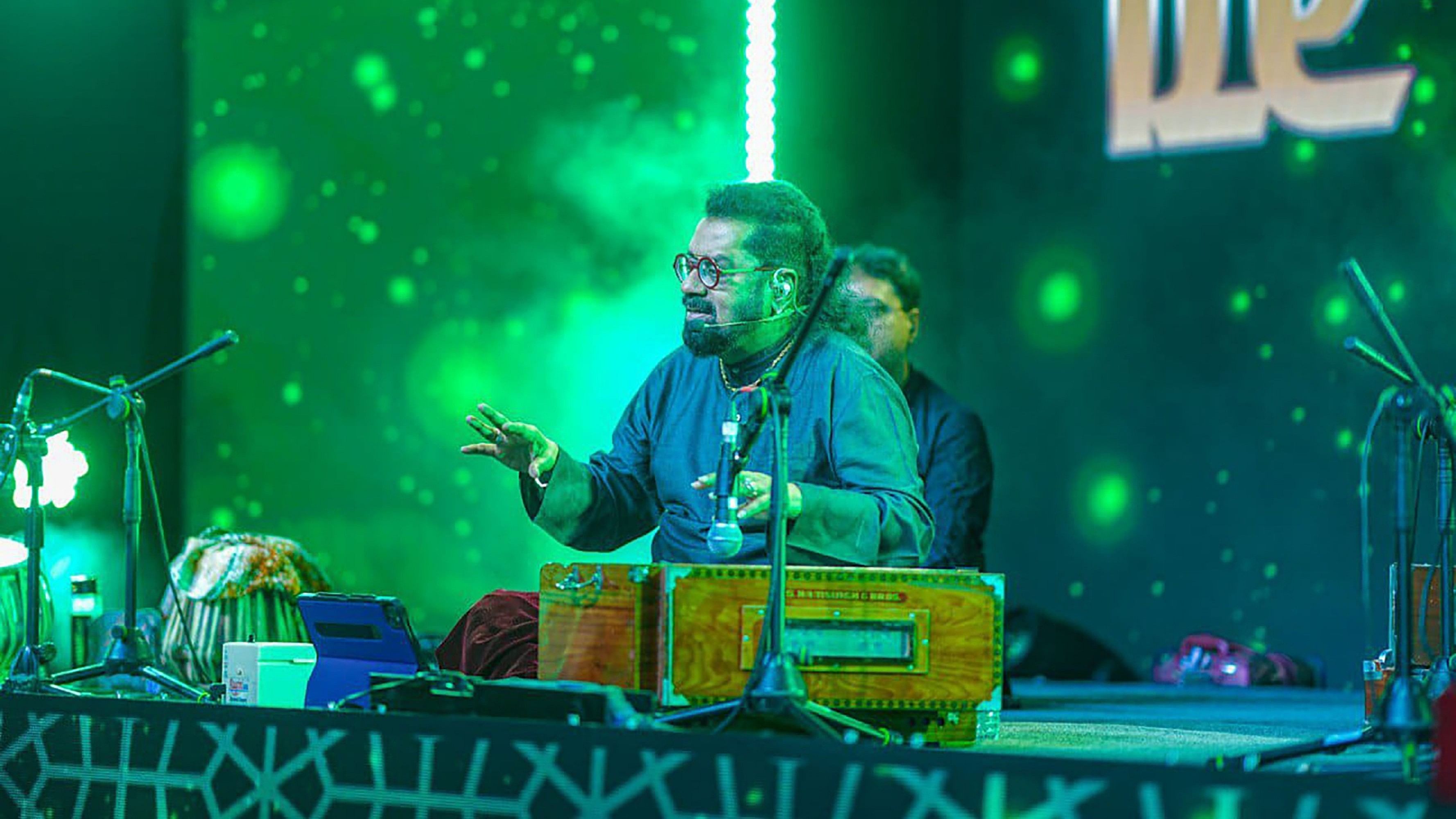
DH Photo
Ghazal maestro Hariharan is completing his 50th year as an artiste in 2024. The landmark year is being commemorated through a series of concerts titled ‘Be-Misaal’. The Bengaluru leg of the series saw the 69-year-old performing on November 9.
The concerts are conceptualised by K P Ranjith, a friend of the artiste.
Hariharan was born into a musical family in Mumbai. His father H A S Mani was a classical musician, while his mother, Alamelu Mani, was a Karnatik vocalist. His mother was his first guru.
He later trained under Ghulam Mustafa Khan and Mehdi Hassan.
Though he started his career in 1974, it was in the ’80s that he reached his peak. The best period of his career was from the mid ’80s to 2010.
“The first five years were hard. I had very little work. In the music industry, if you are imitating someone else it is very easy to become popular. But if you are trying to be yourself and be original, it takes a lot of time to find recognition and get to the top,” he notes.
Hariharan has performed across film industries in India. He has found fans in audiences of Hindi, Tamil, Telugu and Malayalam films. Some of his noteworthy collaborations have been with music composer A R Rahman in iconic films such as ‘Roja’, ‘Bombay’ and ‘Dil Se’.
Hariharan has over 30 albums to his name — ‘Aabshar-e-Ghazal’ and
‘Gulfam’ were big hits. He has given voice to more than 15,000 songs. He has also been conferred with two National Film Awards and the Padma Shri.
“I started singing for films in 1977 with A R Rahman and Zakir Hussain. I was recognised in the genres of rock, hip hop and ghazal, so the ’90s were a boon,” says Hariharan, adding, “Ghazals are soft and soothing. This is the magic of this genre. Any film song that has an element of ghazal music always clicks.”
The future of ghazal music looks promising, believes Hariharan. Up and coming singers have started learning ghazals from social media, he observes. “On platforms like YouTube young artistes have been experimenting with the genre by blending it with elements of jazz and Karnatik,” he shares.
Some of these promising musicians include Satyajeet, Yuthi Gander, Yash Gander and Prathibha Bhage, he says.
His advice to those starting out as ghazal musicians? “Learn your art thoroughly. Learning classical music helps to get a better understanding of the rhythm and raga,” he says. “Music and popularity are different things. When you become popular it will probably last for two years. If you make (good) music, it will last forever,” Hariharan continues.
Next, he hopes to collaborate with his son Akshay, a trance musician.